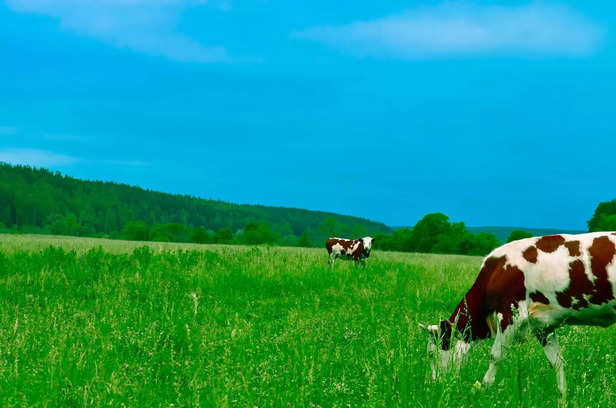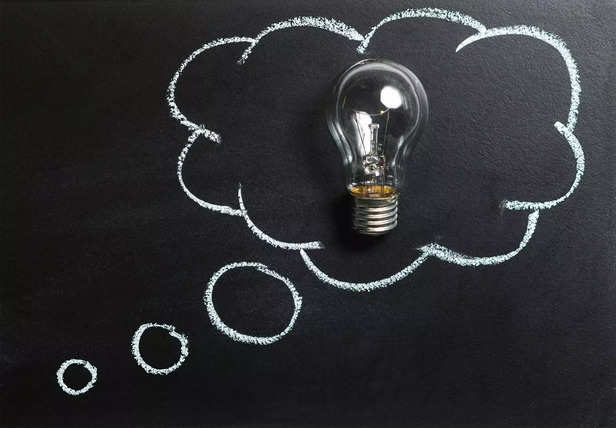Is Dairy Against Hinduism? The Truth About Ahimsa and Milk
Riya Kumari | Apr 03, 2025, 12:43 IST
( Image credit : Timeslife )
So, you’re sitting there, sipping your chai (or oat milk latte, I don’t judge—okay, maybe a little), and suddenly it hits you: Wait, is drinking milk un-Hindu? Like, did I just spiritually cancel myself by ordering paneer butter masala? It’s a fair question. Hinduism is all about ahimsa—non-violence, respect for all living beings, and that whole “don’t be a jerk” philosophy.
Hinduism is built on ahimsa—the principle of non-violence. We hear it, we say it, we even admire it when someone else follows it with conviction. And yet, we live in a world where the milk in our fridge comes from an industry that thrives on a level of suffering we conveniently choose not to see. It’s a contradiction we don’t talk about. We believe cows are sacred. We refuse to eat beef because taking a cow’s life is unthinkable. But we consume their milk, rarely stopping to ask: At what cost?
1. Milk in the Vedas: A Different Time, A Different Reality

Vedic culture revolved around cows, but not in the way modern dairy does. Back then, cows were treated as family—loved, protected, and allowed to live their full lives. Their milk was taken only after their calves had enough, and when they stopped producing milk, they weren’t “retired” to a slaughterhouse but continued to be cared for.
Milk wasn’t an industry. It was a relationship. The cow gave, and in return, she was given safety, food, and dignity. It was an exchange of trust, not exploitation. But that world no longer exists.
2. The Modern Dairy Industry: A System of Violence

Today, the milk we consume is not freely given; it is forcefully extracted. Cows are artificially impregnated, their calves taken away within hours of birth so that humans—not their own children—can drink their milk. The male calves, useless to the industry, are often discarded, abandoned, or sent to slaughter.
The cows themselves are milked relentlessly until their bodies give out, after which they are “disposed of”—a gentle word for a brutal end. If ahimsa is the heart of Hinduism, how does this fit in? It doesn’t.
3. The Dharma of Choice

To be Hindu is not to follow blind tradition but to seek wisdom. And wisdom demands that we question our choices. If dairy was once sacred because it came from a place of kindness, does it remain sacred when it comes from suffering? If a ritual holds meaning only when performed with purity of intent, does consuming factory-farmed milk—knowing the pain behind it—still align with our values?
Some will say, But our ancestors consumed milk, and they were deeply spiritual! True. But our ancestors lived in a world where cows were honored, not commodified. The question is not whether they drank milk. The question is whether they would drink this milk.
The Bigger Lesson of Hinduism
Hinduism never asked us to mindlessly repeat the past. It asked us to understand—to apply wisdom to evolving circumstances. It is why the Bhagavad Gita doesn’t give rigid rules but instead teaches dharma—the ability to discern right from wrong based on context, knowledge, and conscience.
And if we truly listen, our conscience knows the answer. So, is dairy against Hinduism? Hinduism never feared questions. The real question is—knowing what you know now, what will you choose?
1. Milk in the Vedas: A Different Time, A Different Reality

Cow
( Image credit : Pexels )
Vedic culture revolved around cows, but not in the way modern dairy does. Back then, cows were treated as family—loved, protected, and allowed to live their full lives. Their milk was taken only after their calves had enough, and when they stopped producing milk, they weren’t “retired” to a slaughterhouse but continued to be cared for.
Milk wasn’t an industry. It was a relationship. The cow gave, and in return, she was given safety, food, and dignity. It was an exchange of trust, not exploitation. But that world no longer exists.
2. The Modern Dairy Industry: A System of Violence

Cow exploitation
( Image credit : Times Life Bureau )
Today, the milk we consume is not freely given; it is forcefully extracted. Cows are artificially impregnated, their calves taken away within hours of birth so that humans—not their own children—can drink their milk. The male calves, useless to the industry, are often discarded, abandoned, or sent to slaughter.
The cows themselves are milked relentlessly until their bodies give out, after which they are “disposed of”—a gentle word for a brutal end. If ahimsa is the heart of Hinduism, how does this fit in? It doesn’t.
3. The Dharma of Choice

Think
( Image credit : Pexels )
To be Hindu is not to follow blind tradition but to seek wisdom. And wisdom demands that we question our choices. If dairy was once sacred because it came from a place of kindness, does it remain sacred when it comes from suffering? If a ritual holds meaning only when performed with purity of intent, does consuming factory-farmed milk—knowing the pain behind it—still align with our values?
Some will say, But our ancestors consumed milk, and they were deeply spiritual! True. But our ancestors lived in a world where cows were honored, not commodified. The question is not whether they drank milk. The question is whether they would drink this milk.
The Bigger Lesson of Hinduism
And if we truly listen, our conscience knows the answer. So, is dairy against Hinduism? Hinduism never feared questions. The real question is—knowing what you know now, what will you choose?
